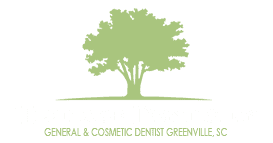Tongue cleaner
A tongue cleaner is designed to clean the coating off the top of the tongue, with the intention of reducing bad breath. Tongue cleaners can also serve an aesthetic purpose, reducing or removing the whitish coating that may appear on the tongue and returning the tongue to a healthy pink color. These devices are sometimes also called tongue scrapers or tongue brushes. In many cases, bacteria that is found on the tongue is one source of bad breath. The surface of the tongue can also harbor pathogens that cause and are caused by dental cavities and periodontal diseases. Cleaning the tongue may therefore help reduce dental cavities and periodontal diseases as well as bad breath.
People who use tongue cleaners do not tend to employ them as frequently as they brush and floss, though some sources recommend including them in daily oral hygiene practices to maintain the cleanliness of the tongue’s surface. Cleaning the tongue may trigger the gag reflex, and excessive or too-hard scraping or brushing of the tongue may damage the taste buds. It is also possible that there is risk involved in loosening and then inhaling the bacteria on the tongue, though there is not sufficient evidence to support this claim; to reduce any risk, it is recommended that users always scrape the tongue from back to front, and that people with certain heart conditions refrain from using tongue cleaners.
Tongue cleaning has been a widely practiced part of oral hygiene in the traditional Indian medicine practice of Ayurveda. Tongue cleaning has been a part of Ayurvedic tradition since ancient times, and it has also been practiced for hundreds of years in Africa, Europe, and many Eastern and Asial cultures. Tongue cleaners have traditionally been made of copper, silver, brass, gold, wood, ivory, mother of pearl, whalebone, tortoiseshell, and plastic. Tongue cleaning has been less common in Western cultures, though it was historically practiced by wealthy people up until the 19th century.
Although the top of the tongue can be brushed as part of the toothbrushing process, toothbrushes do not clean the tongue as effectively as tongue scrapers or tongue cleaners. They are generally too small and their bristles too soft to remove the debris and bacteria that build up on the top surface of the tongue, as they are designed to be flexible enough to clean between and around the teeth and gum line. There are toothbrushes that are manufactured with bumpy tongue-cleaning ridges on the reverse side of the bristles attached to their handles, and these are generally more effective than the brushes themselves, though still not as efficient as tongue cleaners. Tongue cleaners are shaped in such a way that they align with the shape of the tongue and are specifically designed to lift and remove bacteria from the tongue. Tongue cleaners can be specialized electrical devices, or they can be simple strips of plastic; many variations exist between these two ends of the tongue-cleaner spectrum. Contemporary tongue cleaners are usually made of metal or plastic, or they are small brushes with rigid bristles that rake the tongue. They may also be looped, like a lasso. These different types of tongue cleaners vary in effectiveness and are usually chosen based on cost and consumer preference.
